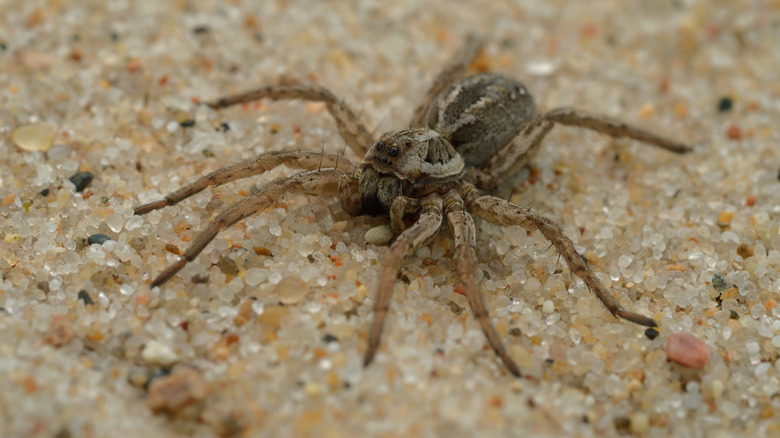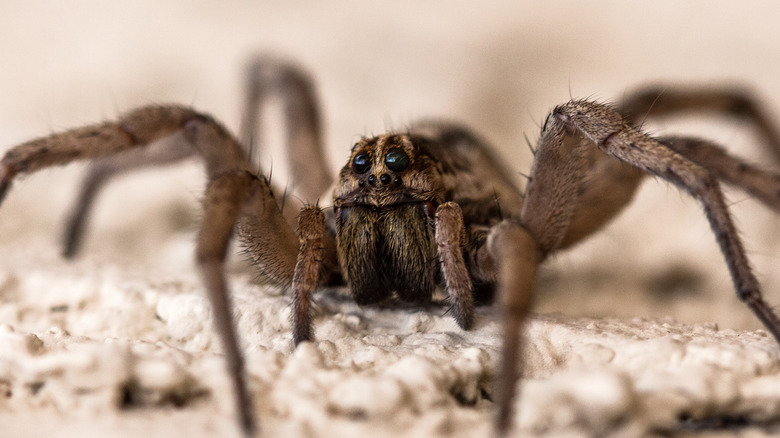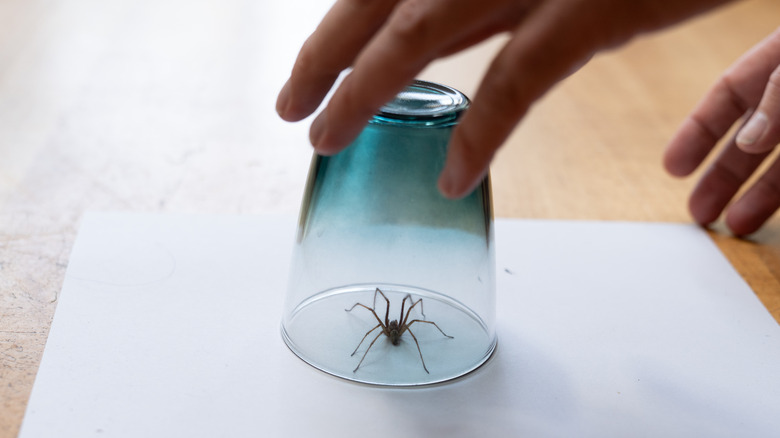The Best Way To Get Rid Of Wolf Spiders In The House
Wolf spiders are poisonous pests that typically don't bite people unless they are disturbed. Yet, wolf spiders, which can be up to 2 inches long, are not something you want to have in your home. Your initial reaction may be to smash one of them if you find it crawling through your house, but that could make things worse. Instead, carefully capture the pest without coming into contact with it and transfer it outside of your home. Doing this ensures that the spider (and any of the spiderlings the mother may carry with her) are safely removed from your home. It's not likely they'll find their way back in unless there are numerous cracks and crevices that make it easy for any pest to make its way into your home.
While wolf spider bites contain poison that creates the same type of experience as a bee sting, you still don't want to encourage these spiders to remain in your home and develop a large colony. Removing them through proper trapping (even by using a few tools right from your home) minimizes the risk of anyone getting bitten by them. This process doesn't have to be difficult, either. If you want to get rid of wolf spiders and other pests in your home, trap them and then practice a few prevention strategies to minimize the risk to your home going forward.
Why you don't want to stomp on a wolf spider
Getting rid of a wolf spider in your house by capturing it is best. There are several ways to do this, including purchasing traps designed to lure spiders in with bait. Some people don't like to use this method because it means having a toxic chemical in the home that an inquisitive child or dog might access. For that reason, consider using a simple trap with a cup to help move the spider out of your home.
That may seem like an extra step to take, especially if there's a risk that the spider could get out. However, one of the worst things you can do if you have a wolf spider present in your home is to smash it. If you do this, you could be smashing a spider that's carrying young hatchlings, which stick with their mother until they are big enough to find food on their own. If you squish the mother spider, those small babies will race around your floor and duck into various holes and dark spots. These spiderlings are often numerous, which can make getting rid of them more difficult.
If you don't want to move the spider but want to kill it, you can use a spider-killing spray. However, again, this introduces a toxic chemical into your home that you can avoid with more natural pest control methods.
How to safely trap and prevent wolf spiders
The simplest way to get wolf spiders out of your home is to use a plastic container of some kind. Even a plastic cup with a lid will work. If you have a chance to grab some gloves, do that first. Then, place the plastic container over the top of the spider without striking its legs as you do so. Hold it down tightly for a few minutes. Then, slide a piece of cardboard quickly under the edge of the container, capturing the pest within it. You'll need to move carefully but with ample force to ensure there's no opportunity for the spider to get out.
When you have the spider in the cup, take it outside and walk as far from your home as you can. Then release it. This helps to keep the spider from finding its way back into your home. You may have to do this numerous times if you have more than one wolf spider in your home.
When the spider is out, work to prevent wolf spiders from getting back into your home. Spend a few hours caulking the exterior of your home to seal off any entry points, including around the perimeter closest to the ground. Repair any holes in the siding of the house to prevent them from making their way back in. Be sure to check doors, windows, vent openings, and termite damage, too.


